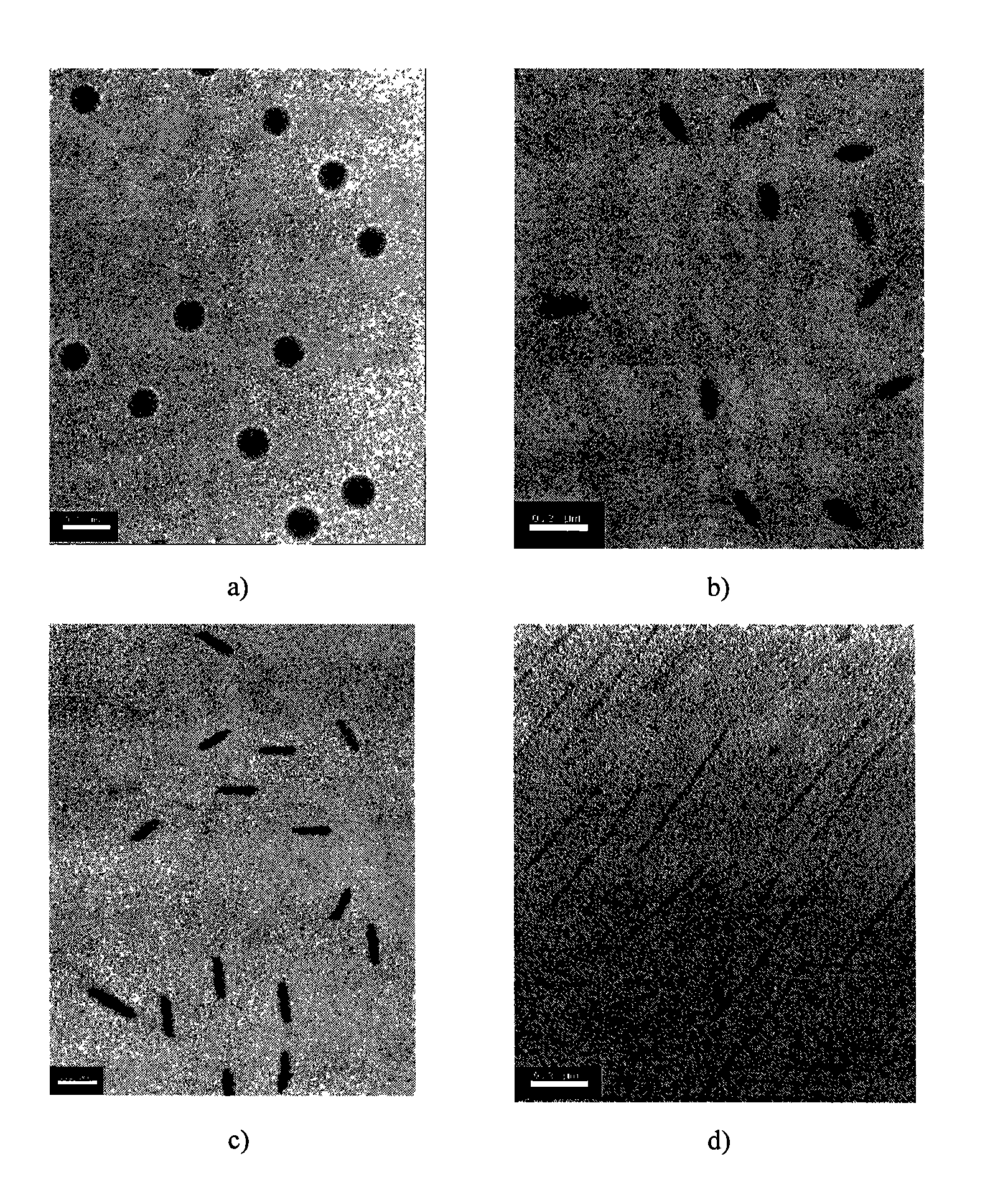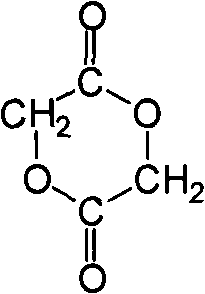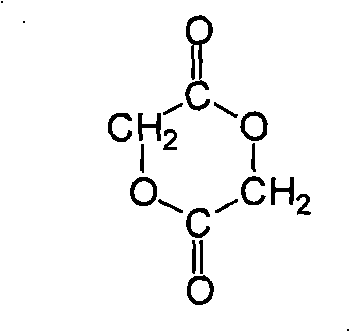Biodegradable high molecular nanometer particles, specialty polymer thereof and preparation method thereof
A polymer and block polymer technology, applied in the field of biodegradable polymer nanoparticles, can solve the problems of biosafety and biocompatibility hazards, impossible to achieve a constant rate of drug release, etc., to avoid biosafety And the hidden danger of biocompatibility, the effect of excellent biodegradability and good stability
- Summary
- Abstract
- Description
- Claims
- Application Information
AI Technical Summary
Problems solved by technology
Method used
Image
Examples
Embodiment 1~12
[0039] According to the reaction mass ratio shown in table 1, glycolide, L-lactide, polyethylene glycol (PEG), and the catalyzer (titanium that is the sum of glycolide and L-lactide weight 0.01~0.15%) butyl ester or stannous isooctanoate), mixed uniformly in a polymerization tube, and then reacted at a temperature of 130-180°C for 10-70 hours under 15Pa vacuum conditions to obtain a series of products with different lengths and ratios of hydrophilic / hydrophobic segments. Polymers PLGE-1 to PLGE-12.
[0040] Table 1 Preparation of PLGE polymer
[0041]
[0042] The molecular weight distribution of the above-mentioned PLGE polymer is between 1.5-2.5.
Embodiment 13~24
[0044] PLGE is an amphiphilic block copolymer containing both a hydrophilic segment (PEG) and a hydrophobic segment (PLGA) in the polymer molecule, so PLGE nanoparticles can adopt the unique self-expression of amphiphilic block copolymer molecules. Prepared by emulsification-solvent diffusion self-assembly method. The specific preparation method is as follows: First, dissolve the PLGE polymer in a water-soluble organic solvent to form a PLGE organic phase, and then gradually add the PLGE organic phase to a certain temperature of the water phase at 20-30 ° C, so that the organic solvent naturally diffuses into the water phase , while the hydrophilic PEG segment in the PLGE molecule migrates to the interface and enriches, and finally solidifies to form PLGE nanoparticles with a core-shell structure with the hydrophobic PLGA segment as the core and the hydrophilic PEG segment as the shell. , the particle size range of the nanoparticles is 10-200nm. The water-soluble organic solv...
PUM
 Login to View More
Login to View More Abstract
Description
Claims
Application Information
 Login to View More
Login to View More - R&D
- Intellectual Property
- Life Sciences
- Materials
- Tech Scout
- Unparalleled Data Quality
- Higher Quality Content
- 60% Fewer Hallucinations
Browse by: Latest US Patents, China's latest patents, Technical Efficacy Thesaurus, Application Domain, Technology Topic, Popular Technical Reports.
© 2025 PatSnap. All rights reserved.Legal|Privacy policy|Modern Slavery Act Transparency Statement|Sitemap|About US| Contact US: help@patsnap.com



